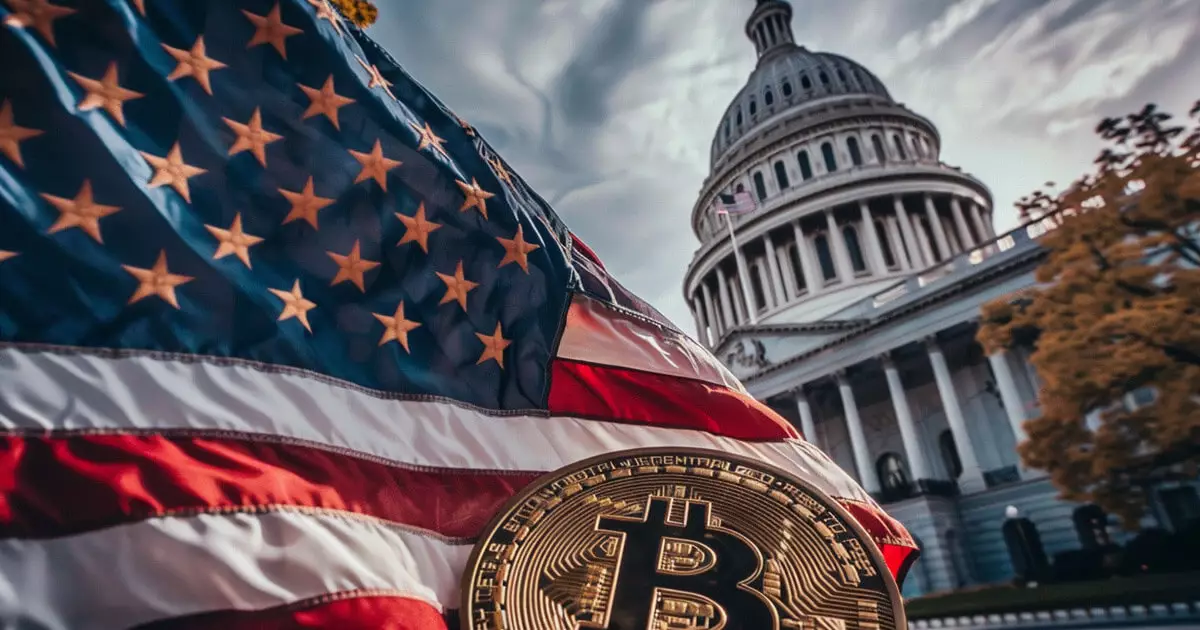In an era marked by rapid technological advancements in finance, the regulation of stablecoins has emerged as a focal point for policymakers and financial regulators. Congresswoman Maxine Waters, a leading voice on the House Financial Services Committee, has recently signaled the urgency for a bipartisan consensus on stablecoin regulation before the end of 2024. Amidst ongoing discussions and negotiations, Waters is advocating for comprehensive federal regulations that prioritize consumer protection while also fostering an environment conducive to innovation in the financial sector.
A Bipartisan Approach to Regulatory Frameworks
The complexities surrounding stablecoins arise from their unique position in the digital asset landscape. Unlike traditional cryptocurrencies, stablecoins are designed to maintain stable values, often pegged to fiat currencies or assets. Waters, alongside her fellow committee member, Republican Rep. Patrick McHenry, has been working since 2022 to draft a regulatory framework for these digital assets. Despite facing challenges, including disagreements over allowing state regulators to unilaterally approve stablecoins without oversight from the Federal Reserve, both parties highlight the necessity of a united front. Waters described these internal divisions as “deeply problematic,” underlining the critical need for a cohesive strategy that could bring stability to the market and protect consumers.
The two lawmakers are optimistic that a deal can be struck, emphasizing the importance of recognizing the unique nature of stablecoins. Waters notably stressed that these assets must be backed by secure reserves, such as short-term Treasury bills, in order to bolster their reliability and stability. The potential impact of stablecoins on the financial ecosystem cannot be understated, as their growth and adoption could lead to significant shifts in how transactions are conducted, particularly regarding remittances and cross-border payments.
The Federal Reserve’s Role in Oversight
A key aspect of the proposed regulatory framework involves the Federal Reserve’s role as a supervisory body for stablecoins. Waters asserts that a structure whereby the Fed maintains oversight is essential, echoing regulatory practices from other nations that have successfully navigated the complexities of digital asset management. This stance seeks to ensure that the financial system remains robust while encouraging innovation rather than stifling it through overly stringent regulations.
McHenry shares similar sentiments about the need for clarity and regulatory precision regarding digital assets. His advocacy for a separate bill, called FIT21, aims to outline a broader structure for the cryptocurrency market, suggesting an incremental approach to regulation that could provide clarity to market participants without impeding growth.
The ongoing discourse surrounding stablecoin regulation is further complicated by the U.S. Securities and Exchange Commission’s (SEC) role in overseeing digital assets. During a recent committee hearing, SEC Chair Gary Gensler and other commissioners faced scrutiny regarding the agency’s “regulation by enforcement” strategy, which has raised concerns among industry stakeholders about the lack of clear guidelines. Commissioner Hester Peirce articulated the frustrations shared by many: the SEC has the necessary tools to provide clarity but has not effectively utilized them to guide market participants.
Peirce emphasized that a clearer understanding of token classification could alleviate some of the confusion faced by burgeoning cryptocurrency businesses. By establishing distinct categories for tokens, the SEC could offer critical guidance on complying with securities laws, ultimately benefiting both issuers and investors. This ambiguity has inhibited potential growth in the sector, as companies are often reluctant to navigate a convoluted regulatory environment. Other SEC commissioners echoed Peirce’s views, indicating a consensus on the need for improved communication and clear guidelines.
As legislative sessions draw to a close, there is an imperative urgency for Congress to act decisively on significant financial reforms. The convergence of voices from both sides of the aisle signifies that there is an opportunity to forge a comprehensive regulatory framework for stablecoins. Waters’ and McHenry’s goal of achieving a “grand bargain” reflects a recognition of the pressing need for clarity in the rapidly evolving digital asset landscape.
The interplay between regulatory clarity and innovation will be crucial as stakeholders from various sectors await actionable frameworks. By fostering collaboration and embracing a regulatory approach that prioritizes consumer protection without stifling innovation, lawmakers can pave the way for a more secure financial future. As discussions continue and the legislative deadline approaches, the onus will be on Congress to not only address the immediate concerns surrounding stablecoins but to also lay a solid foundation for the future of digital finance.













